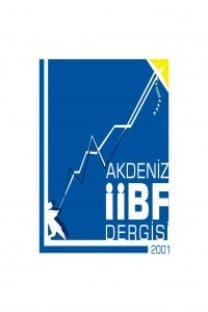TÜRKİYE’DE 2000 SONRASI DÖNEMDE KAMU MALİYESİ UYGULAMALARININ BÖLÜŞÜM ETKİLERİNİN SOSYAL HESAPLAR MATRİSİ (SHM) İLE ANALİZİ
Bu çalışma, Türkiye’de 2000 sonrası dönemde IMF’nin niyet mektuplarıyla belirlenen ve “faiz dışı fazla” ile somutlaşan kamu maliyesi uygulamalarının, hanehalkı, şirketler ve devlet şeklinde nitelenen ekonominin temel kurumları üzerindeki etkilerini ortaya koymayı amaçlamıştır. Temel analiz aracı olarak hanehalkı, şirketler ve devlet kurumlarını kapsayan ve bu kurumların ayrıştırılması ile oluşturulmuş 2002 ve 2006 Sosyal Hesaplar Matrisleri (SHM) kullanılmıştır. Devletin rasyonelleşmesinin ana çerçevesini oluşturan “faiz dışı fazla” ile somutlaşmış kamu maliyesi yapısı devleti, gelirlerin arttırılması ve harcamaların azaltılması ile açıktan fazla verme durumuna geçirirken; hanehalkı ve şirketler kesiminin açığı, özel kesim tasarruflarının azalması ile, derinleşmiş ve bundan en büyük payı kentli emekçi sınıflar ve emekliler almıştır
Anahtar Kelimeler:
Sosyal Hesaplar Matrisi, Kamu Maliyesi, Faiz Dışı Fazla, Bölüşüm
THE ANALYSIS OF DISTRIBUTIONAL EFFECTS OF PUBLIC FINANCE IMPLIMENTATIONS WITH SOCIAL ACCOUNTING MATRIX (SAM) IN TURKEY AFTER 2000s
This study aims to reveal the effects of public finance applications determined by the IMF’s letters of intent and expressed by the “primary surplus” policy on the fundamental institutions of the economy characterised by the household, firms and state in Turkey’s post 2000 era. In this paper, the main analytical tool is 2002 and 2006 Social Accounting Matrices (SAM), which is comprised by household, firms and the state and their decomposed. The public finance structure forms the efficient state framework and applied through primary surplus policy, causes the state to shift from deficit to surplus position by the fiscal austerity programme. In this sense, household and firms’ deficits are deepened via decreasing savings
Keywords:
Social Accounting Matrix, Public Finance, Primary Surplus, Distribution.,
- ISSN: 1302-9975
- Başlangıç: 2001
- Yayıncı: Akdeniz Üniversitesi
Sayıdaki Diğer Makaleler
ARAŞTIRMACILARIN VE LiSANS ÖĞRENCiLERiNiN GÖRÜŞLERi IŞIĞINDA E-DEVLET EĞiTiMiNDE GÜNCEL GELiŞMELER*
H Serkan AKILLI, Cenay BABAOĞLU, M Akif DEMİRCİOĞLU
Hakan ÇETİN, Selin Aygen ZETTER, Sebahattin TAŞ, Murat ÇAYLAK
BİR ARAŞTIRMA, Sebahattin YILDIZ, Süleyman YALAVAÇ, Cem Harun MEYDAN, Kara Harp OKULU
YOLSUZLUK VE KAMU BORCU İLİŞKİSİ: AB ÜLKELERİ ÜZERİNE AMPİRİK BİR İNCELEME
Ahmet ŞAHBAZ, Aylin KOÇ, A Yılmaz ATA
İşlem Maliyetleri Ve B, Kazım DEVELİOĞLU, Bilge Timuçin EKİNCİ
